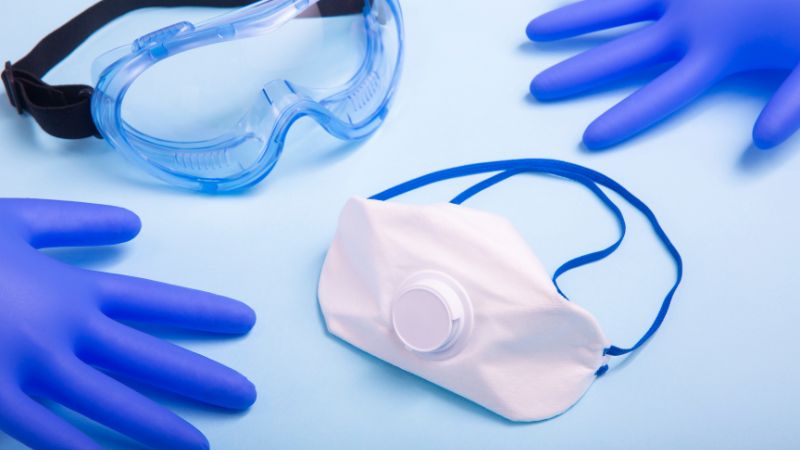Types Of Individual Protective Equipment

Human life is connected with different spheres of activity. Some pose certain risks when contacting chemicals or viral, bacterial microorganisms. Personal protective equipment is used to minimize their exposure. They have different purposes, types, shapes, and materials of manufacture, designed to protect organs from penetration by harmful substances, viruses, and bacteria.
All protective equipment can be divided into two main types: chemical and medical. In addition, employees receive special training for their application to improve the effectiveness of their use.
|
Protection type |
Description |
|
Chemical |
It is necessary to minimize exposure to harmful chemicals in the workplace. It is divided into protective equipment for vision, hearing, hands and feet, from falling from a height, and comprehensive solutions. |
|
Medical |
These are medicines, materials, and devices that protect against contamination and penetration of harmful substances and minimize the impact of damaging factors. |
There are single-use and reusable products, and they can be designed for professional use as well as for civilians. Those who spend most of their time online depend less on personal protective equipment. For example, you don't need professional gear if you spend much time in the CryptoReels roundup, work in IT, or provide various online services. However, even in this case, devices such as gauze and other disposable masks and respirators have become in demand among the population due to the COVID-19 epidemic.
How Medical Personal Protective Equipment Is Used
A special algorithm has been developed to use protective equipment for medical professionals and the public. Different means are provided for this purpose, which is worth considering in more detail.
Masks
The mask must comply with environmental and medical requirements and standards, be used strictly for the intended purpose, and should be disposed of following regulations. The mask should be used by:
- people with symptoms of viral, bacterial, or airborne contamination to limit the spread of respiratory substances;
- medical personnel treating patients with suspected airborne illnesses or by coughing or sneezing;
- health care workers during manipulations, operations, examinations, treatments, tests, and other activities involving risks of infection.
IMPORTANT! Not only those who are ill but also healthy people in crowded places must wear a sterile medical mask to prevent infection and the spread of diseases.
Changing the mask at least after four hours or when it becomes wet is necessary. In this case, it should be carefully removed and not reused.
Respirator
It performs the same function as the mask. However, it has a reinforced protection mechanism. You can read more about it in the article at https://en.wikipedia.org/wiki/Respirator. It is most often used in contact with tuberculosis, measles, and chickenpox patients and when COVID-19 is suspected and detected. The respirator is also effective when working with aerosols containing harmful chemicals and has various degrees of protection approved by the WHO standards.
The respirator is single-use protective equipment and, therefore, must not be used a second time but should be carefully removed and disposed of in a particular container.
Gloves

They are made of materials that do not leak harmful substances and are necessary to protect the skin of the hands. Gloves must not have any external damage or holes, are single-use, and are disposed of like masks and respirators.
Medical gloves are used when:
- probable contact with biological and mucous secretions;
- working with contaminated objects;
- examining patients suspected of having a disease transmissible by reference.
In most cases, they are used by employees of medical institutions, but also by ordinary people if they consider such a method necessary at home.
Personal protective equipment also includes:
- Gowns - with long sleeves and length up to mid-thigh. They can be water-resistant, protect the skin and clothing from contamination and the effects of aggressive substances;
- Goggles and face shields - essential protection for eyes if you work with aerosols or come into contact with airborne illnesses;
- Shoe covers - worn over the shoes when visiting medical institutions and enterprises with increased use of chemicals.
You can buy them in pharmacies to minimize the risk of infection. In addition, all these products undergo strict quality control and are certified and inspected by the regulatory authorities.
A responsible attitude towards yourself and others will help to exclude mass transmission and infection during epidemics and protect the exposed parts of the body - face, hands, eyes, and other organs from damage and exposure to all kinds of harmful substances. Worldwide practice shows that using protective equipment is effective and contributes to a rapid exit from the epidemiological situation.